
ASCII art is a graphic design technique that uses computers for presentation and consists of pictures pieced together from the 95 printable characters defined by the ASCII Standard from 1963 and ASCII compliant character sets with proprietary extended characters. The term is also loosely used to refer to text-based visual art in general. ASCII art can be created with any text editor, and is often used with free-form languages. Most examples of ASCII art require a fixed-width font such as Courier for presentation.
Infocom was an American software company based in Cambridge, Massachusetts, that produced numerous works of interactive fiction. They also produced a business application, a relational database called Cornerstone.
Interactive fiction, often abbreviated IF, is software simulating environments in which players use text commands to control characters and influence the environment. Works in this form can be understood as literary narratives, either in the form of Interactive narratives or Interactive narrations. These works can also be understood as a form of video game, either in the form of an adventure game or role-playing game. In common usage, the term refers to text adventures, a type of adventure game where the entire interface can be "text-only", however, graphical text adventure games, where the text is accompanied by graphics still fall under the text adventure category if the main way to interact with the game is by typing text. Some users of the term distinguish between interactive fiction, known as "Puzzle-free", that focuses on narrative, and "text adventures" that focus on puzzles.
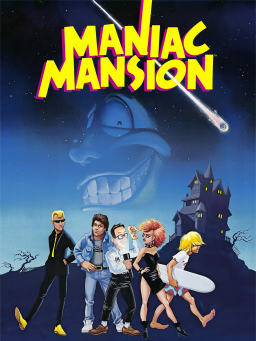
Maniac Mansion is a 1987 graphic adventure video game developed and published by Lucasfilm Games. It follows teenage protagonist Dave Miller as he attempts to rescue his girlfriend Sandy Pantz from a mad scientist, whose mind has been enslaved by a sentient meteor. The player uses a point-and-click interface to guide Dave and two of his six playable friends through the scientist's mansion while solving puzzles and avoiding dangers. Gameplay is non-linear, and the game must be completed in different ways based on the player's choice of characters. Initially released for the Commodore 64 and Apple II, Maniac Mansion was Lucasfilm Games' first self-published product.

Amiga demos are demos created for the Amiga home computer.

The demoscene is an international computer art subculture focused on producing demos: self-contained, sometimes extremely small, computer programs that produce audiovisual presentations. The purpose of a demo is to show off programming, visual art, and musical skills. Demos and other demoscene productions are shared at festivals known as demoparties, voted on by those who attend and released online.

Return to Zork is a 1993 graphic adventure game in the Zork series. It was developed by Activision and was the final Zork game to be published under the Infocom label.
Graphics are visual images or designs on some surface, such as a wall, canvas, screen, paper, or stone, to inform, illustrate, or entertain. In contemporary usage, it includes a pictorial representation of data, as in design and manufacture, in typesetting and the graphic arts, and in educational and recreational software. Images that are generated by a computer are called computer graphics.
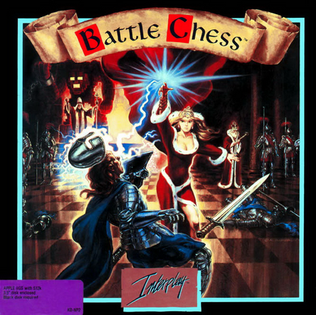
Battle Chess is a video game version of chess with 2.5D graphics and fighting animations showing the result of one piece moving onto the square of another. It was developed and released by Interplay Entertainment for the Amiga in 1988 and ported to many other systems, including the 3DO Interactive Multiplayer, Acorn Archimedes, Amiga CD32, Amiga CDTV, Apple IIGS, Apple II, Atari ST, Commodore 64, MS-DOS, FM Towns, Nintendo Entertainment System, MacOS, PC-98, X68000, and Microsoft Windows. In 1991, Battle Chess Enhanced was released by Interplay for IBM PC compatibles and Macintosh with improved VGA graphics and a symphonic musical score played from the CD-ROM.
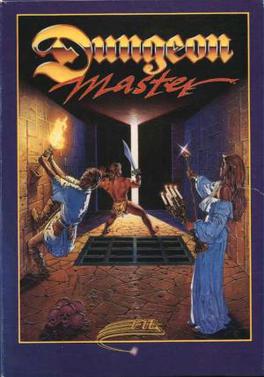
Dungeon Master is a role-playing video game featuring a pseudo-3D first-person perspective. It was developed and published by FTL Games for the Atari ST in 1987, almost identical Amiga and PC (DOS) ports following in 1988 and 1992.

Another World is a cinematic platform action-adventure game designed by Éric Chahi and published by Delphine Software in November 1991. In North America it was published as Out of This World. The game tells the story of Lester, a young scientist who, as a result of an experiment gone wrong, finds himself on a dangerous alien world where he is forced to fight for his survival.
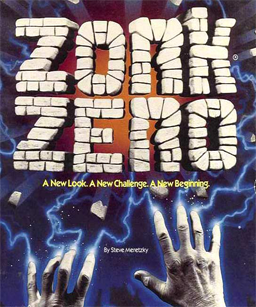
Zork Zero: The Revenge of Megaboz is an interactive fiction computer game, written by Steve Meretzky over nearly 18 months and published by Infocom in 1988. Although it is the ninth and last Zork game released by Infocom before the company's closure, Zork Zero takes place before the previous eight games. Unlike its predecessors, Zork Zero is a vast game, featuring a graphical interface with scene-based colors and borders, an interactive map, menus, an in-game hints system, an interactive Encyclopedia Frobozzica, and playable graphical mini-games. The graphics were created by computer artist James Shook. It is Infocom's thirty-second game.

Spelljammer: Pirates of Realmspace is a video game for MS-DOS released by Strategic Simulations in 1992. It is a Dungeons & Dragons PC video game using the Advanced Dungeons & Dragons, Second Edition rules, and the Spelljammer setting. Spelljammer was programmed and designed by Cybertech Systems.

The Labyrinth of Time is a graphic adventure video game created by Terra Nova Development, a two-man team composed of Bradley W. Schenck and Michal Todorovic. Intended to be the first in a series of games, The Labyrinth of Time was less successful than similar graphic adventures released around the same time, such as The 7th Guest and Myst. It is the sole game produced by Terra Nova Development. In the years after its release, The Labyrinth of Time was published on more recent platforms by The Wyrmkeep Entertainment Co. in collaboration with the original developers.

Curse of Enchantia is a graphic adventure game developed and released by the British video game company Core Design for MS-DOS and the Amiga in 1992. The game tells the comic fantasy story of Brad, a teenage boy from modern Earth who was magically abducted to the world of Enchantia by an evil witch-queen. He needs to escape and find a way back to his own dimension.
Mark Giambruno, is a 3D artist, art director and writer. As an early employee of Mondo Media, he worked on many of their game projects and contract game cinematics. He also voiced the Lifty & Shifty characters for the popular internet show Happy Tree Friends, a role he now shares at times with Kenn Navarro. He is the author of two books on 3D graphics and has also done the English rewrite on over 40 US-licensed manga and light novels.

Lionheart is a platform game for the Amiga developed and self-published by German video game developer Thalion Software in 1993. Using a fantasy motif, the game takes place in the land of the Cat People, a race of feline humanoids, who are threatened by the evil Norka. The player assumes control of Valdyn, an outlaw swordsman who is also known as "Lionheart". Players have to fight their way through 14 levels filled with monsters and environmental hazards. Most of the gameplay is melee combat and precision platforming.

Sex Vixens from Space is an erotic interactive fiction game developed and self-published by Free Spirit Software and originally released in 1988 for the Commodore 64 and Apple II as part of the compilation Sex And Violence Vol. 1. It was released as a standalone game, with the addition of graphics, in November 1988 for DOS and Amiga and in 1989 for the Atari ST. Sex Vixens was inspired by the 1974 sexploitation film Flesh Gordon. The game was panned by reviewers.

Bride of the Robot is a 1989 erotic text adventure game developed and self-published by Free Spirit Software and released for the Amiga and Atari ST. The Amiga version of Bride of the Robot was published in Europe in June 1989 by CSJ Computersoft. Bride of the Robot is the third entry in the Brad Stallion series, and is preceded by Sex Vixens from Space (1989) and Planet of Lust (1989), and succeeded by Sex Olympics (1991).
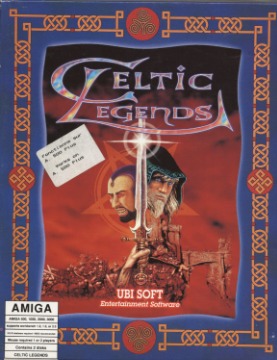
Celtic Legends is a 1991 video game published by Ubisoft.














